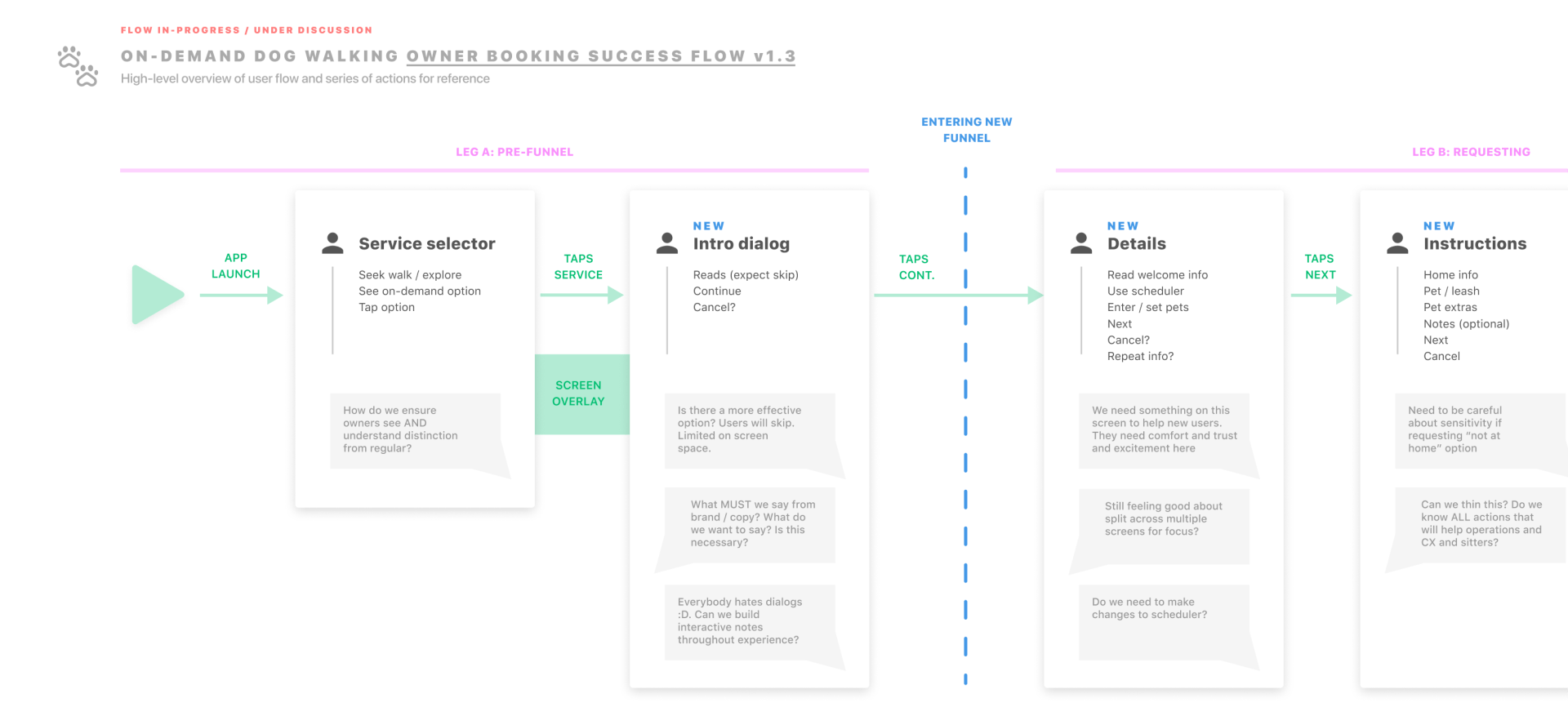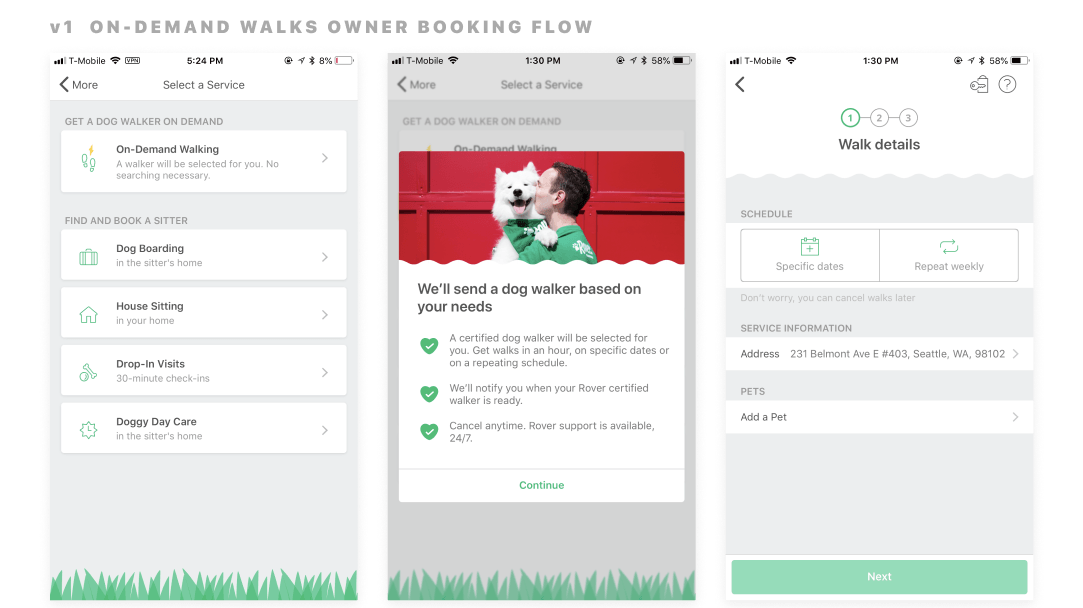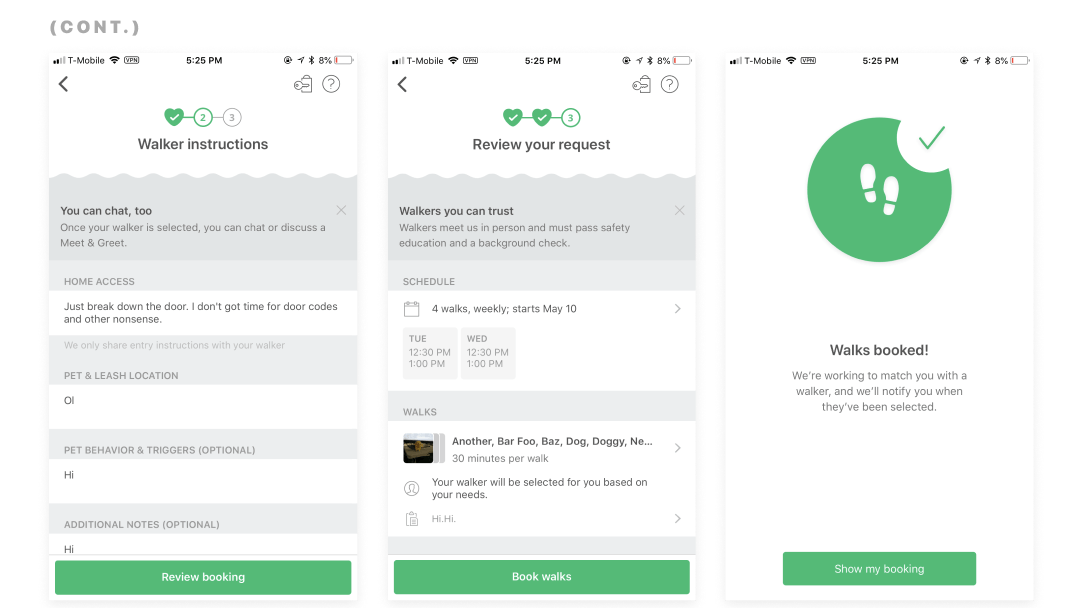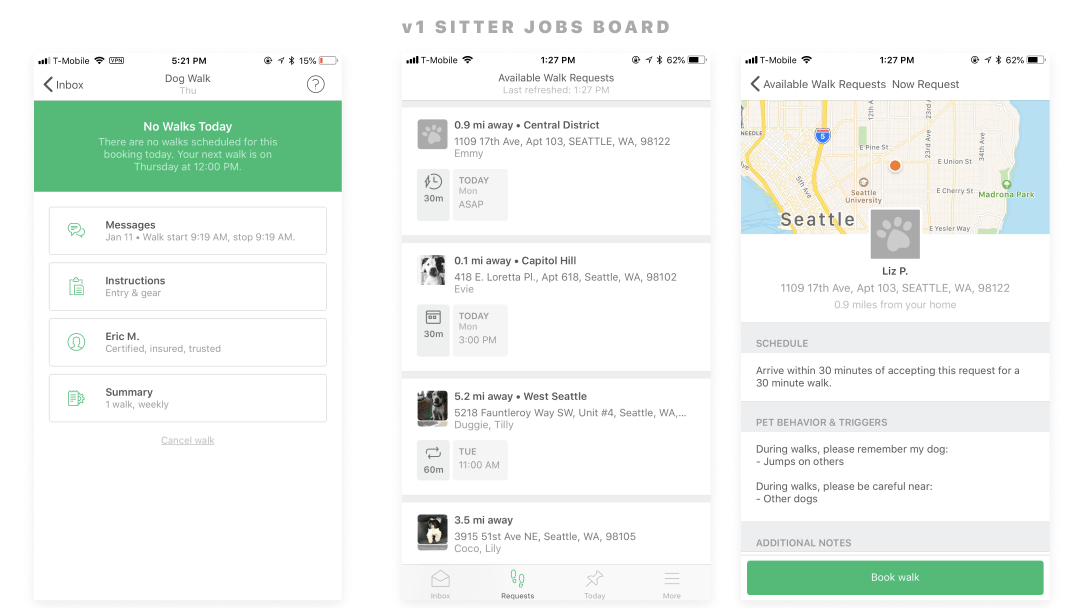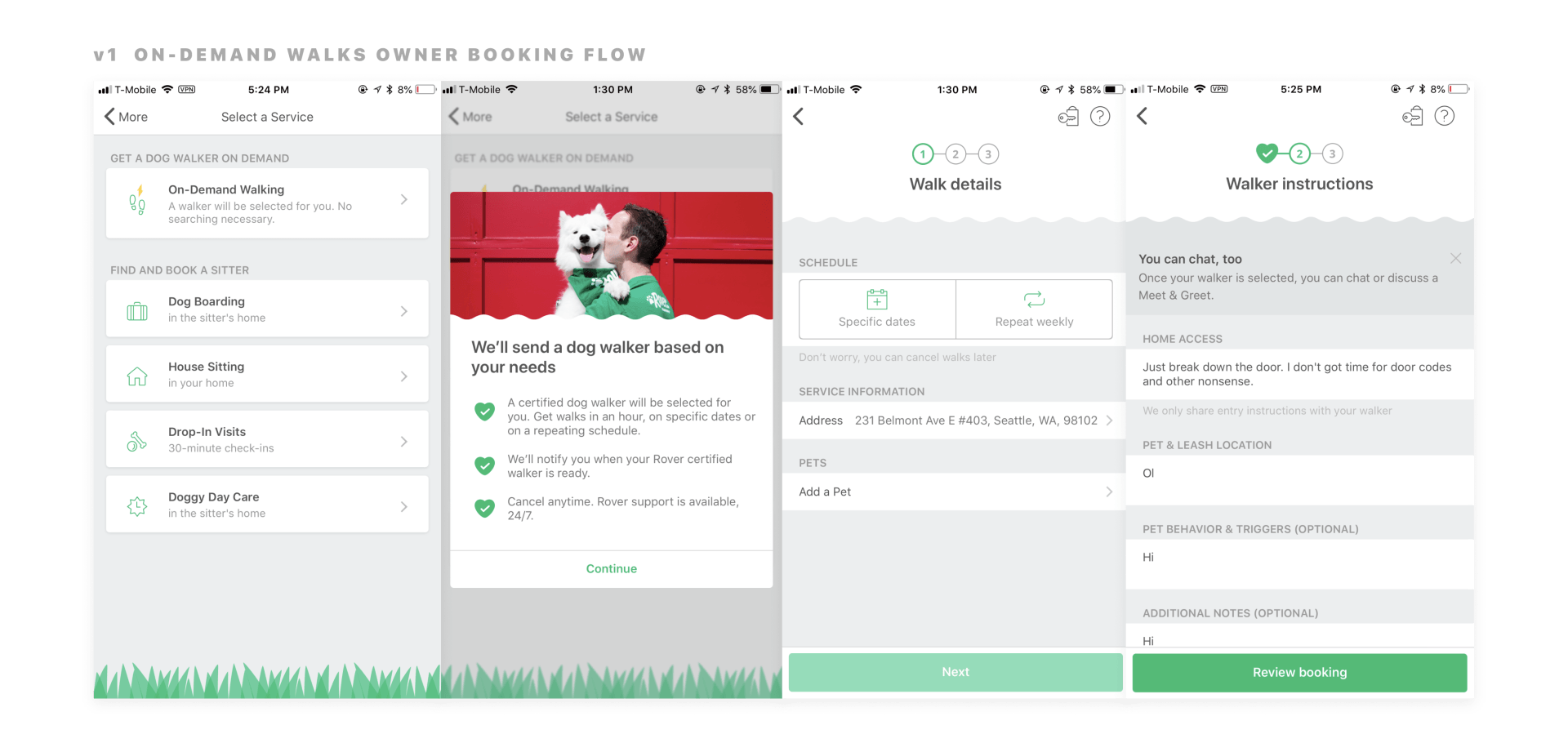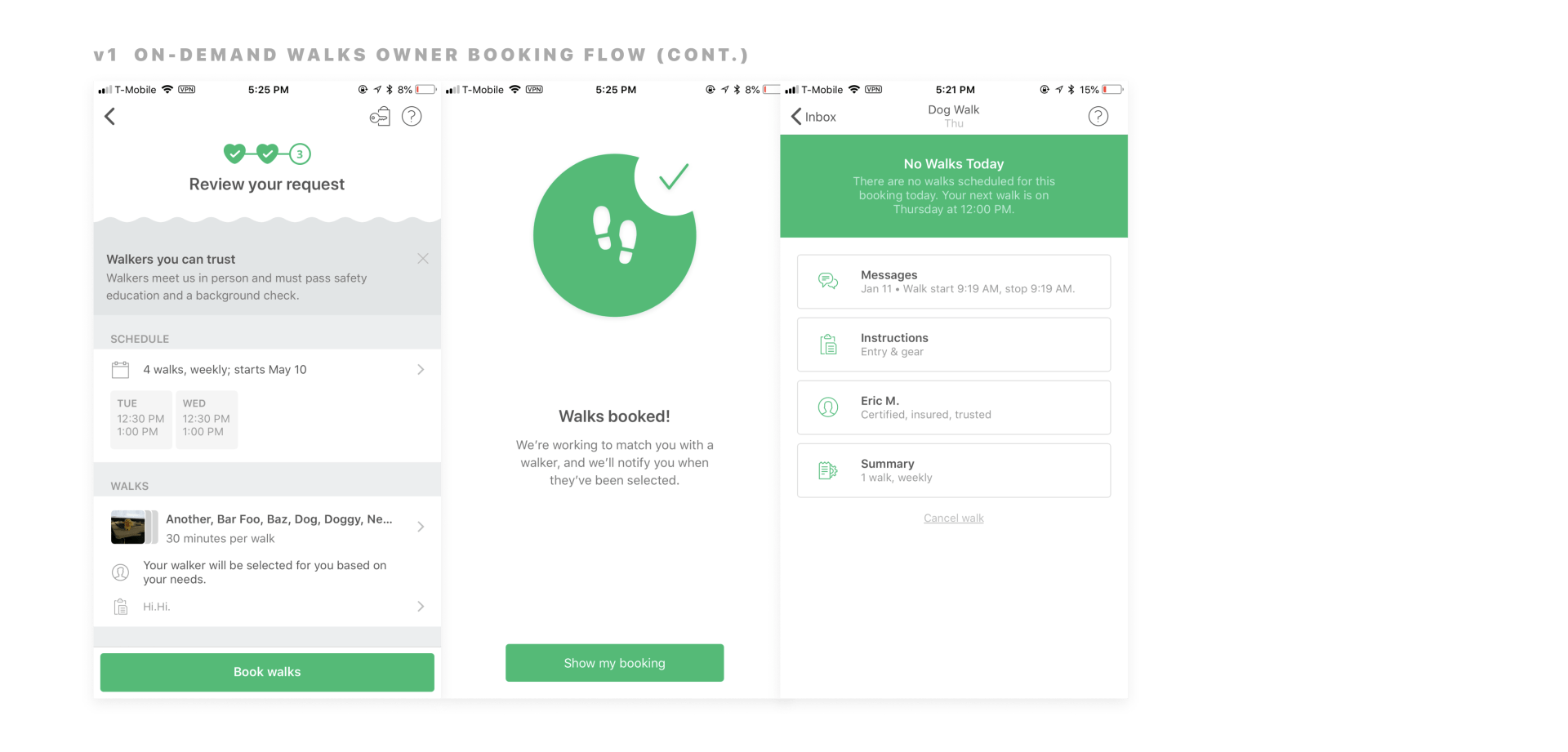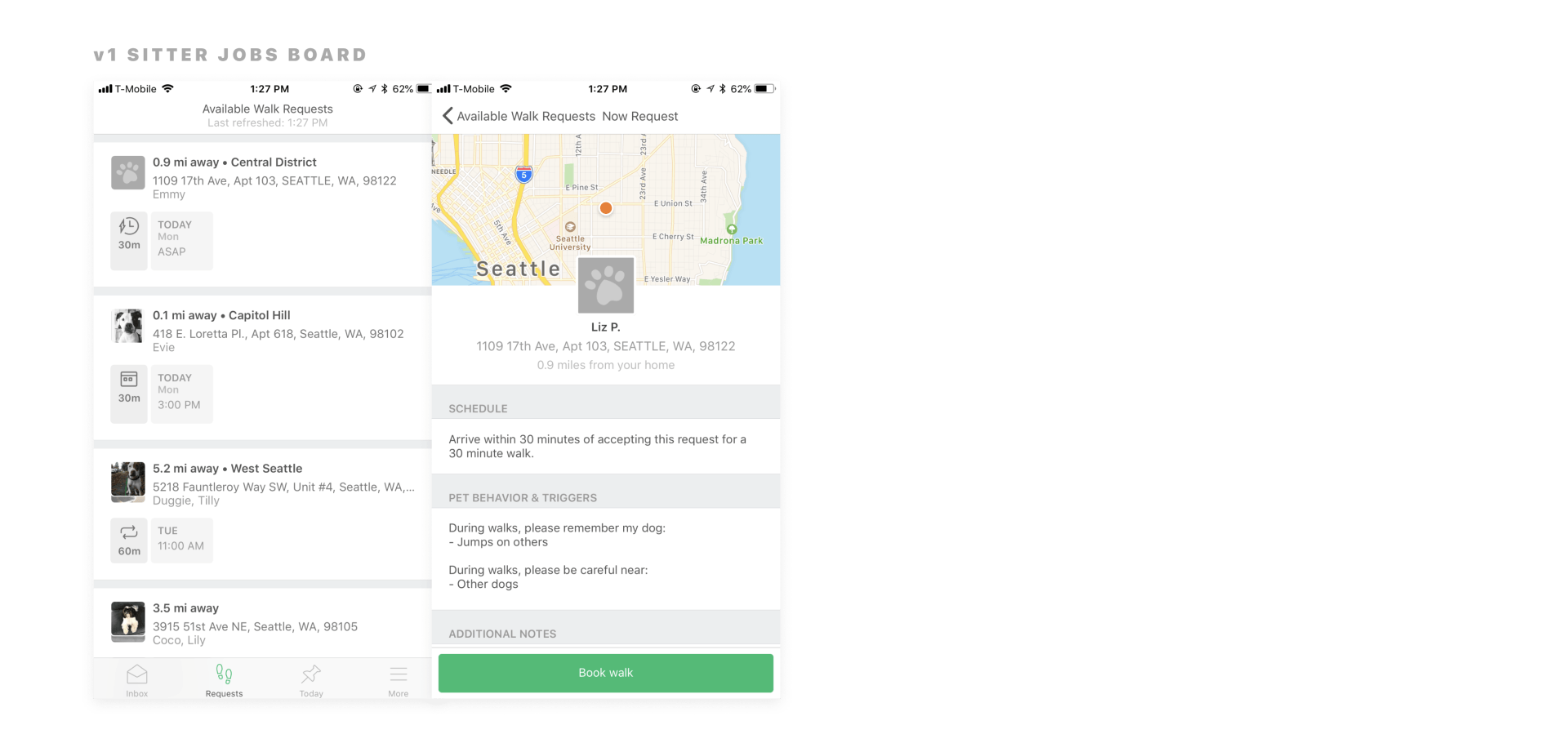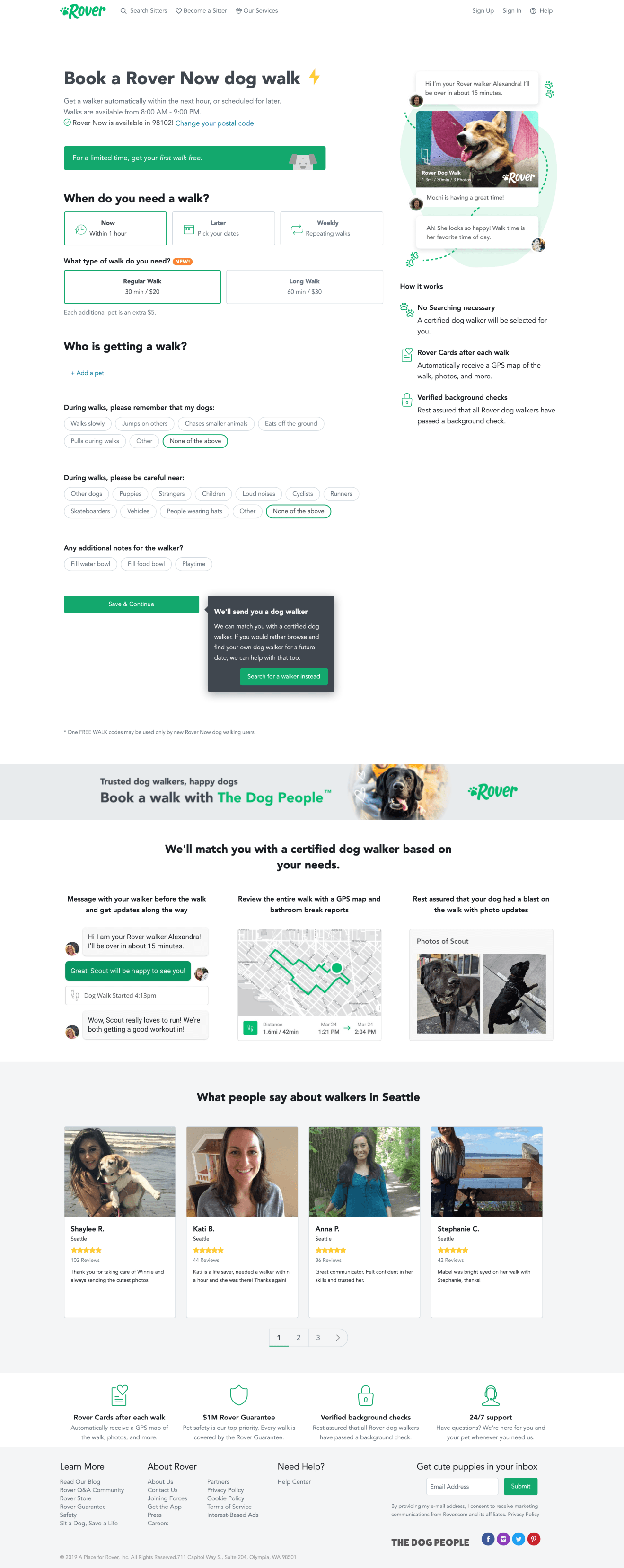ROVER NOW
Why make dog walks available on-demand?
Rover Now is an on-demand dog walking service across multiple cities in the US and Canada. Pet owners are automatically matched with a walker for walks within 1 hour or any time in the future. Walkers are notified when a walk is available in their area to accept. It's been a great success: serving hundreds of thousands, if not millions, of walks, and generating millions in revenue.
As the Product Designer leading this project, I designed this business from the ground up with my PM counterparts. This was my second significant project at the company.
We were seeking to grow audience and revenue streams. We began with a question: how could we enable pet owners to request dog walks on demand, even at the last minute, even if owners aren't at home?
Data indicated this was a frequent occurrence, and competitors were trying it.
The company decided this would be a significant focus, and we'd launch in 5 months with Seattle as the test market.
We hit the ground running. We dug deep into competitors. We pored over data and ran new studies. We sought new market demographics, including a deep dive into dog owner groupings in the US.
High-level requirements were quickly generated: owners make a generic request, sitters do the work of accepting them, owners don't need to be home, and sitters provide real-time verification through the app.
To help my team understand model possibilities, I created high level user flow options to (a) demonstrate how this could work (b) highlight areas of uncertainty and friction.
EARLY ROVER NOW BOOKING FLOW FOR TEAM DISCUSSION (CLICK TO SEE LARGER)
I wanted us to reference an evolving diagram of the system to guide discussions and changes.
ROVER NOW
Bare bones to launch
Thematic challenges arose. On the owner side, how do we communicate this complex concept, particularly with sensitive information like walkers optionally accessing the home when owners are away—at the owner's behest, of course? How do we request all of this information? How do we ensure owners and their possessions are safe? On the sitter side, how do we ensure we have enough supply, that they're engaged, that they're trustworthy and capable, and that they'll follow through with real time updates? We discussed these options, created prioritization that spoke to our requirements and business goals, and started making decisions. One of the biggest decisions for scoping: focus on the mobile apps, which sitters must do anyway while traveling for walks.
We decided we would create a complete, multi-screen intake form for owners to focus on each set of information we wanted to capture. We would build on top of existing systems, like our user conversation infrastructure. We would create a new job board for sitters and notify them of new walk opportunities. We would utilize our existing service verification framework to provide real time walk updates and send a report card after. We would only use existing design elements; no new visual updates. And we would require walkers to pass extensive security checks and in-person walk training to reinforce competence and trust. We even investigated partnering with digital lock hardware.
We iterated and created the first version, prioritizing existing styles only and not creating new visual components. Lean and scrappy.
ROVER NOW MVP v1
These are the core screens for the Rover Now MVP across the owner and sitter experiences (3 pages of screens). We did not have time to create new design components that may have better served this flow and exclusively reused existing pieces—which made sense, given the timeline.
ROVER NOW
Launch, learnings, and the path to what's live
Launch went really well! Super exciting for the team and company.
Expected demographics were excited at the prospect, and sitters were happy being enabled to be more proactive about their businesses.
The chief lesson in creating the MVP is that we spent too much time trying to polish and predict how users would receive the experience; we wanted our first iteration to feel fully functional, given competitor presence. We could have launched lean (e.g., a web form in app) to learn quickly—cheaply polishing only the most important elements. (We applied this learning to future iterations.)
With CX feedback and data pouring in, we started mapping out v2 improvements, including emphasizing safety, security, and trust; finding the most efficient method of illustrating the overall concept; and enabling owners to rebook a walker they had before. We'd also expand beyond the 2-3 cities we were currently in.
We also realized we needed to allow owners to still be able to pick walkers in some markets instead of only using the on-demand matching model (something we'd hoped to do for various reasons). So we launched hybrid markets: owners could pick a walker or get one on-demand.
Then we started adding more features, optimizing for our sitters and supply and simplifying the owner booking experience.
Overall, we identified a potential market opportunity, launched it, and generated an entire new arm of the business, one which is being built upon and expanded today. It provided a modern method of convenience for owners and automation for sitters and for our internal systems. This was a tremendous learning experience and a successful launch.
ROVER NOW TODAY (CLICK TO SEE FULL)
This is what the Rover Now booking funnel has progressed to on desktop web, a year and a half after the service was first launched—thanks to the fabulous design team! Exciting to watch.


